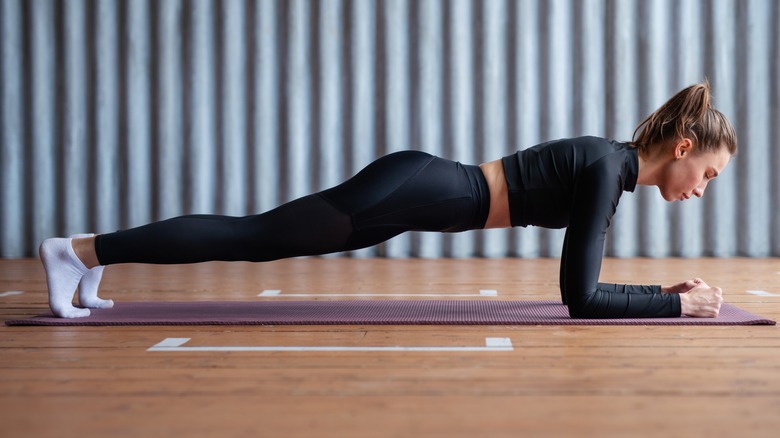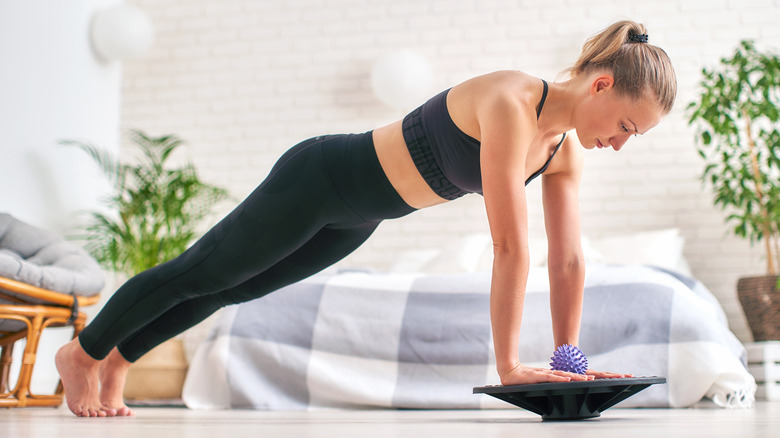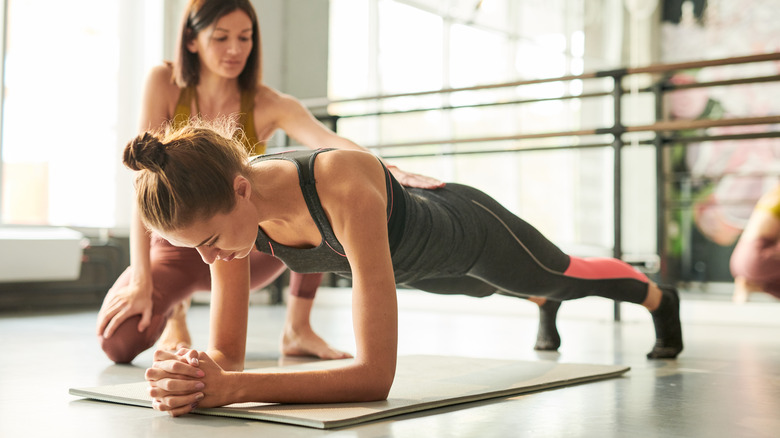The Plank Mistake That Will Negate The Benefits
Planking is the all-in-one ab exercise that has made crunches and sit-ups a thing of the past. Planking every day can have positive effects on your body. And, according to Healthline, planking can even improve your posture too. This challenging workout strengthens your back, shoulders, chest, neck, and abs when done correctly. It also allows you to effortlessly remain upright. With the increased strength of your core, you'll be able to counteract temptations to hunch and slouch while sitting and standing.
Without a strong core, exercises such as deadlifts and squats can lead to injury, as Cleveland Clinic warns. Likewise, planking doesn't build up just one core muscle but three, working your rectus abdominis, obliques, and transversus abdominis. Since planking is a full-body workout that doesn't require any equipment, it's easy for anybody to execute anywhere — including at home. However, there's one major planking mistake that will negate these health benefits and can even cause injury over time.
It's crucial to keep your back straight while planking
To reap the fitness benefits of planking, you must avoid arching your back. According to Live Strong, this is the most common mistake people make when attempting this exercise. As your core strains from the muscles being worked, your back typically jumps in to support it. However, this continuous exercise mishap can lead to lower back pain. It's also counterproductive, as when done properly planks can strengthen back muscles.
Arching your back also stops the workout of your abdominals, so you'll no longer be developing those muscles either. The alignment of your back is a key part of executing the plank correctly. Another common mistake that throws this off is lifting your butt. Having your butt higher than your shoulders is not the proper way to engage your glutes. Neither is bending it too close to the floor, per Greatist. Always keep your spine aligned.
The best way to avoid common planking mistakes
The easiest way to avoid planking mistakes is to know how to do a plank correctly. Start in a push-up position. To engage your upper back, Real Simple advises widening your shoulder blades as far as possible and pushing them away from your ears. Squeeze your thighs and glutes while positioning them in alignment with your back and neck. Planking is a full-body exercise; if you're not feeling the burn in your legs, for instance, push into the balls of your feet until those muscles are engaged.
There are tons of plank variations for the ultimate core workout, but engaging your muscles and ensuring your spine stays in line with everything else goes for all of them. When planking, your elbows should be under your shoulders, per Very Well Fit, and the balls of your feet should be directly under your heels. It helps to look at the floor to help keep your head in the proper position, too. Crucially, if you feel any sharp pain, end the exercise. Overdoing it will cause more harm than good.


